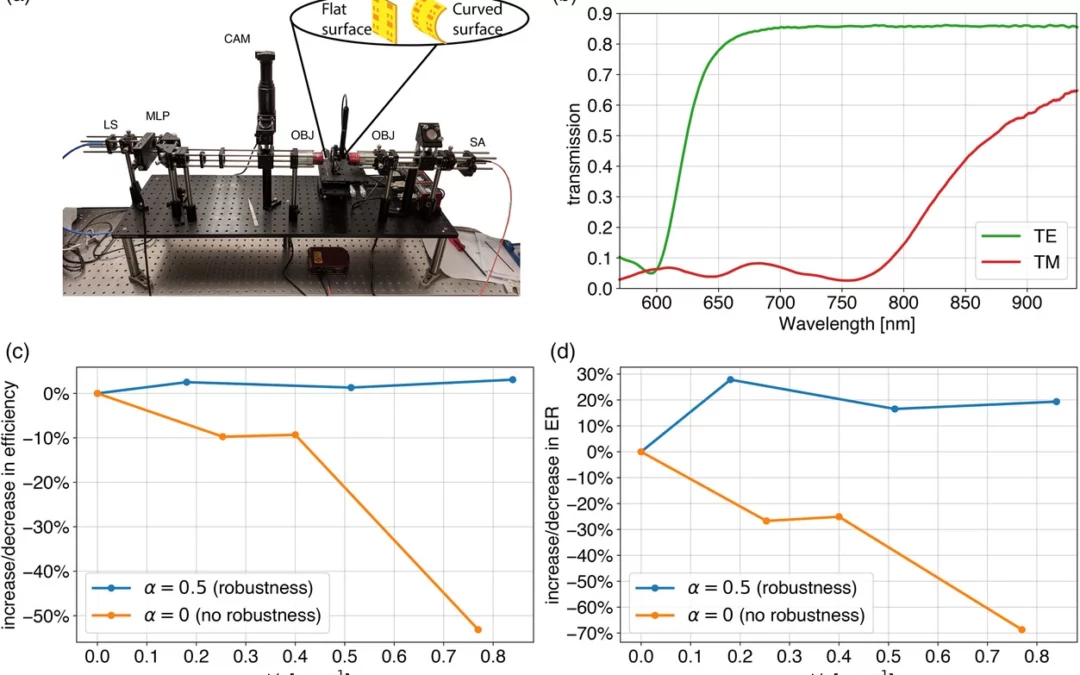
by fratax | Sep 15, 2021 | ai photonics
In the past 20 years, flat-optics has emerged as a promising light manipulation technology, surpassing bulk optics in performance, versatility, and miniaturization capabilities. As of today, however, this technology is yet to find widespread commercial applications....
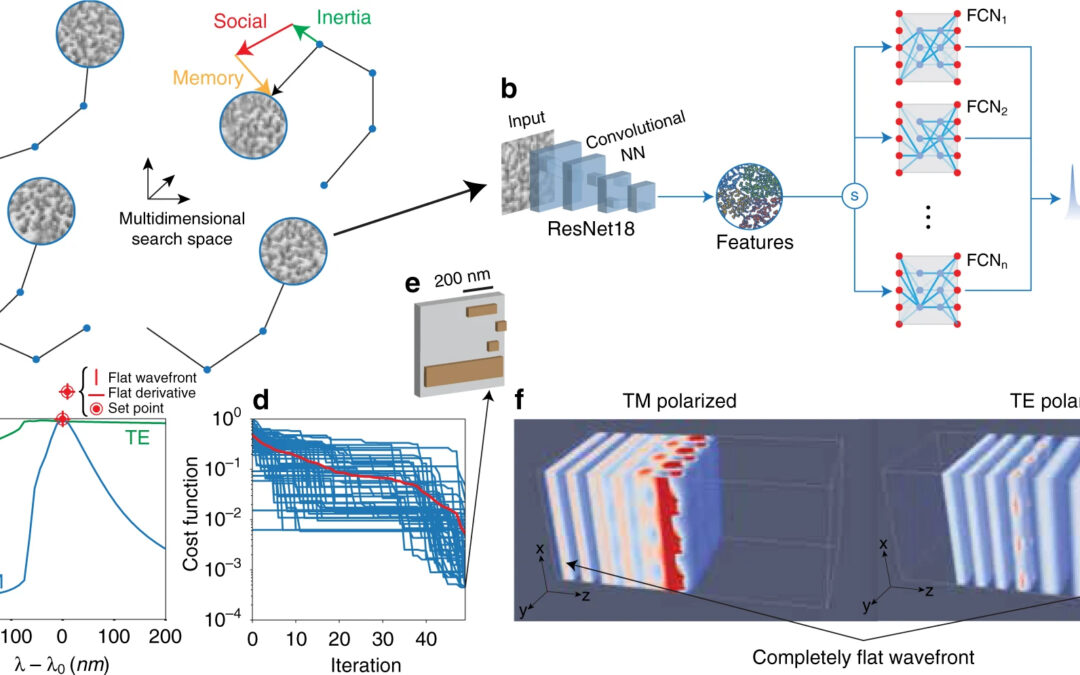
by fratax | Mar 8, 2021 | ai photonics
Integrating conventional optics into compact nanostructured surfaces is the goal of flat optics. Despite the enormous progress in this technology, there are still critical challenges for real-world applications due to the limited operational efficiency in the visible...
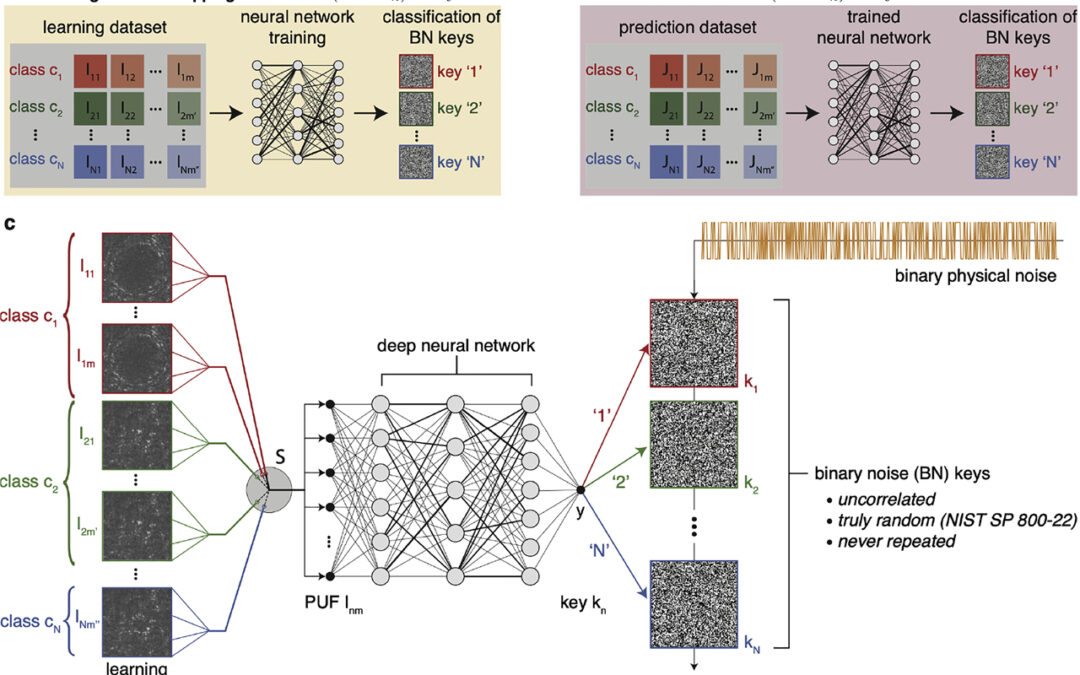
by fratax | Oct 29, 2020 | ai photonics, cryptography
Physical unclonable functions (PUFs) are complex physical objects that aim at overcoming the vulnerabilities of traditional cryptographic keys, promising a robust class of security primitives for different applications. Optical PUFs present advantages over traditional...

by fratax | Feb 6, 2020 | ai photonics
An integrated, ultrafast, optical neuromorphic processor that: Realises an arbitrary Turing machine that can represent any arbitrary defined function of a multidimensional space of coordinates varying with time. It has the same expressive power of state of the art...
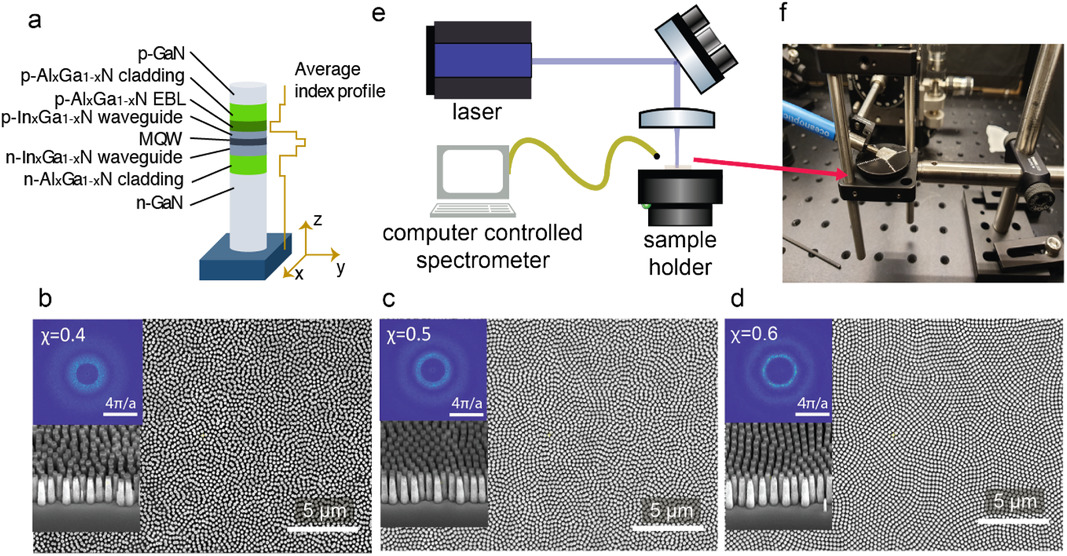
by fratax | Jan 19, 2020 | ai photonics
Designing light sources with controllable properties at the nanoscale is a main goal in research in photonics. Harnessing disorder opens many opportunities for reducing the footprints of laser devices, enabling physical phenomena and functionalities that are not...
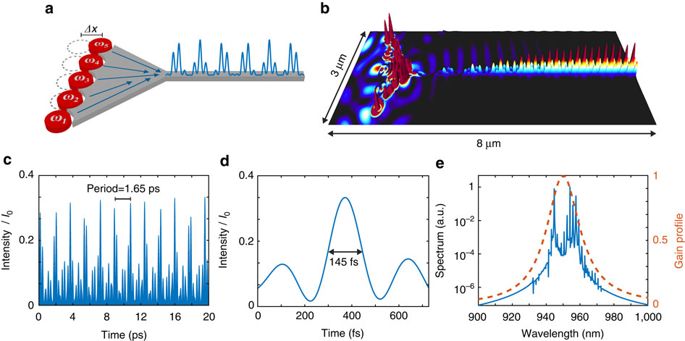
by fratax | Aug 11, 2019 | ai photonics
Nanophotonics is a rapidly developing field of research with many suggestions for a design of nanoantennas, sensors and miniature metadevices. Despite many proposals for passive nanophotonic devices, the efficient coupling of light to nanoscale optical structures...








Recent Comments